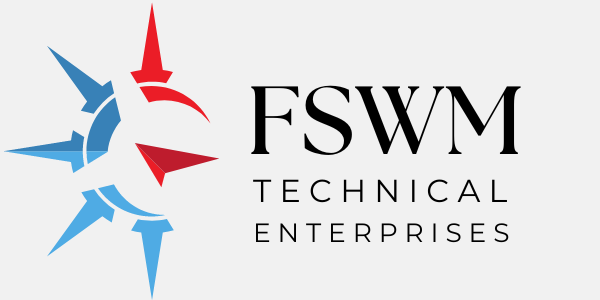 FSWM Technical Enterprises Inc.
FSWM Technical Enterprises Inc.
3553 J. C. Avenue
Marietta, NY 13110
www.cyclobarrier.com
My name is John Byrnes. I am the President and Founder of FSWM Technical Enterprises Inc., which is a Consulting and Design Services business founded in 2016.
I am writing to you today to share what our company perceives as a ‘missing piece of the puzzle’ for renewable energy systems that are applied in active hurricane zones and why we believe that matters.
Since 2017, FSWM has performed extensive research related to the Resiliency of renewable energy systems located in active hurricane regions. This research has led us to several observations:
- Almost universally, commercial solar and wind turbine installations that are located in active hurricane zones, are not rated to withstand greater than 110 MPH wind speeds.
- The failure rate for installations of these products, within active hurricane zones, is much higher than the industry average.
- Almost universally, commercial Solar fields are installed without any means to shield the PV panels from hurricane force winds and, more importantly, from the associated airborne debris. We at FSWM refer to this type of mounting as an ‘open’ system, meaning no protection is allotted to the solar panels to prevent airborne debris strikes.
- Insurance costs are rising for Commercial Solar and Wind Applications in active Hurricane zones.
- When a major hurricane makes landfall, local roads quickly become impassable, snarled with downed power lines and trees, completely cutting off the fuel supply for remote power generating equipment.
- The industry is recognizing that the current wind tower design standards are insufficient for hurricane zone applications (as indicated by IEC61400-1 edition 4 which has added a new subclass for wind turbines in active hurricane zones).
- Virtually all existing / available mounting systems for solar panels, and wind turbines, are ‘open-type’ systems which fully intend for those PV Panels / wind turbines to be completely exposed during a hurricane. The result is these systems have a very low ‘resiliency’.
The current ‘state of the technology’ for both Solar and Wind Applications in Hurricane-prone regions consist of ‘open’ mounting systems (fixed pole / frame-mounted solar and pole mounted wind turbines) that have been engineered to ‘survive’ excessive wind speeds. These mounting designs tend to “Tested / Rated” for various excessive wind speeds.
While it is true that the typical mounting systems in use today have been designed to survive higher wind speeds, nearly all such systems ignore the fact that at 100 MPH sustained wind speeds there is always an associated ‘debris cloud’ that forms. At Hurricane-force wind speeds, it is common for very heavy objects (such as tree trunks / limbs, roofs, small vehicles, etcetera) to be carried horizontally in the debris cloud at significant speeds.
Generally speaking, it is not the hurricane force winds which destroys ‘open-type’ renewable energy installations, rather it is the multitude of airborne debris strikes that occur. When a large airborne object strikes an ‘open’ design mounting system (such as the support structure / pole of a commercial wind turbine, or a frame mounted solar panel system) those renewable energy mounting systems are then structurally compromised and quickly fail.
These ‘open-type’ installations bear significantly higher insurance costs because underwriters know they are much more likely to be destroyed prior to reaching their intended ‘design life’.
Examination of the NOAA Hurricane Map clearly shows the regions where damage is likely to occur within the intended design life of installed renewable energy systems. NOAA Link
Certain regions of the world experience a major hurricane every 7 to 8 years, with an additional risk of significant tropical storms (up to Cat 2) every 3 or 4 years (Caribbean, Virgin Islands, US Gulf Coast and US Eastern Coast). The typical commercial solar system is designed to last 25 years. However, when applied in Hurricane-prone regions, these systems are highly likely to be damaged far in advance of the intended deign life, simply due to the number of Hurricanes the system is exposed to over time.
One of the most pertinent and recent examples occurred when Hurricane Maria which struck Puerto Rico in September of 2017. Evidence of the destruction that occurred is documented in the “The Wind Engineer, Spring 2018 Newsletter” (NEWSLETTER OF THE AMERICAN ASSOCIATION FOR WIND ENGINEERING). The Wind Energy facility in Naguabo, and the Solar Power facility at Humacao were within the path of hurricane Maria, and both were completely destroyed.
The damage experienced at these facilities is extensive enough to question the strategy of large, exposed, renewable-power facilities located in hurricane zones. Hurricanes occur frequently in this region and it is a near certainty that the region will be struck again within the projected 20-year life-cycle of these industrial renewable power facilities.
FSWM Technical Enterprises believes that highly resilient, on-site, renewable energy production is critical for those regions that have been struck by a major hurricane. As seen in Puerto Rico after Hurricane Maria, it took months just to clear and repair roadways. When roads are impassable, fuel cannot be delivered to remote power generators. In the wake of Hurricane Maria, many of these valuable generating assets were idled for long periods of time, simply due to a lack of fuel. Resilient, local, On-Site production of Renewable energy is needed for Island-based communities that are located in Hurricane-prone regions.
Based on our extensive research, we at FSWM also believe that more advanced, and ‘hardened’, renewable energy mounting systems are critical to achieving the goal of high ‘resiliency’, and to ensure that on-site, renewable energy production is available the day after such storms strike. To achieve this level of Resiliency, FSWM believes it is imperative to incorporate active shielding methods and technologies.
Since early 2017, our team has invested significant time, effort and resources to design such systems and we are now announcing the completion of the Design Phase for several proprietary Products (Automated mounting systems that are engineered to actively protect these valuable renewable energy systems). These hurricane-resistant renewable energy mounting systems range from Residential size to Commercial / Industrial scale. We at FSWM believe that these products are the ‘missing piece of the puzzle’ in achieving highly resilient, locally generated, renewable energy.
